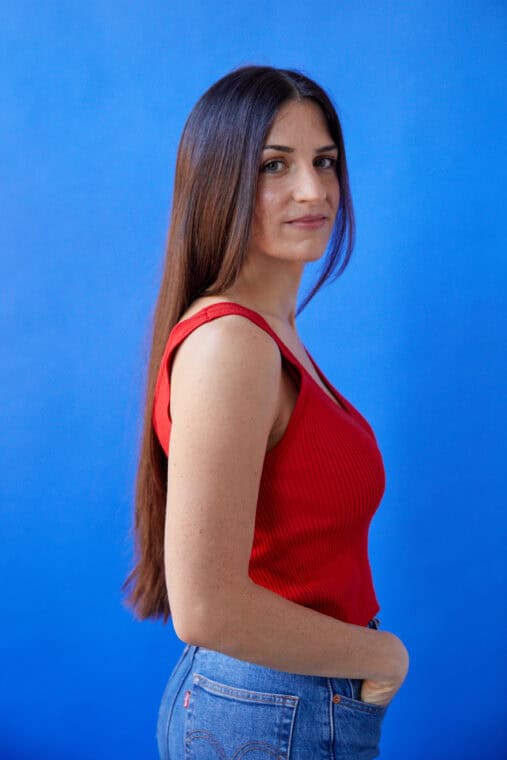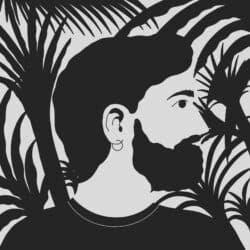For Claire Nest, trust is the key to working well with illustrators – and impact is the result.
This is the third in a three-part series profiling illustrators who have contributed to The Philanthropist Journal. In the series debut, our profile of illustrator and anthropologist Julien Posture, we listed tips on how to best work with illustrators. The second piece showcased illustrator and designer Maïa Faddoul, whose work is often in the service of community and rights organizations.
Claire Nest, an illustrator who specializes in motion graphics and animation, came to Canada from Strasbourg, France, eight years ago on a travel/work visa, fell in love, and stayed. Now living in Montreal, she recently became a creative director at Fern, a motion studio based in Atlanta, Georgia, and Tokyo, Japan, with clients ranging from corporate bigwigs to indie filmmakers to an Emmy-winning production studio celebrated for its commitment to impact storytelling.
Though Nest credits in part her grandfather, a painter, with instilling in her an appreciation for arresting visuals, her first love is film. She studied cinema and video production back in France, which led to an interest in animation and motion design; she’s mostly self-taught. “It began with my love for the cinema: the moving image with audio and music,” she says. “It was never just drawing. It was the whole thing.”

After teaching herself how to animate images, she realized that working with her own drawings would offer many advantages, so she studied up on illustration and design. “I think it’s more interesting to animate your own illustration and your own design, because you know [by drawing] what part you want to animate and the way you want to animate it.”
There are a number of whimsical animations on Nest’s Instagram account, often created as exercises in motion graphic effects: objects and animals move in ways that are highly relatable. “I’m interested in the human figure and human movement. I like to watch how someone works, or how someone’s character is revealed in their movements.”

After Nest had freelanced with Fern for a couple of years, the studio asked her to become a creative director. She jumped at the opportunity; she was a fan of Fern’s approach to animation. “They use a lot of collage, a mix of media with photography and video, not just illustration,” she says. “It’s a very creative way to do animation.”
And it’s highly adaptable.
The projects that get Nest most excited are never the easy ones. Her first with Fern is one of her favourites. It teamed her up with Exposure Labs, a film studio in Boulder, Colorado, that has won multiple Emmys for its socially conscious documentaries (2017’s Chasing Coral, about the challenges facing the world’s coral reefs, and 2020’s The Social Dilemma, about the price we pay for our dependence on social media, are still available to stream on Netflix). Each film at Exposure Labs is conceived as part of an explicit impact strategy; they are produced to effect change. The studio’s socially engaged approach has garnered support from a variety of US-based philanthropic organizations.
How can we explain a concept in three seconds? That’s the challenge.
Claire Nest
In 2022, Exposure Labs partnered with the non-profit digital-rights advocacy group Fight for the Future to produce Creating Our Tech Futures, a series of short films and social media posts that exposes the biases of the algorithms powering the internet and explores ways to rebuild the internet in a more open and equitable fashion. The series advocates for policies that protect privacy, prohibit censorship, and stop discrimination online. Fern was responsible for the series’ animation and design, illustrating what various talking heads are discussing and creating graphic overlays.
“It’s a very complex subject,” Nest says. “They talk about algorithms and about code. It’s not very easy to understand [technical concepts] like that. And they talk about the related civil rights issues and discrimination of minorities.” Nest says she loved translating that complexity into something easy to understand. “How can we explain a concept in three seconds?” she asks. “That’s the challenge.”
As both a freelance illustrator and a creative director, someone who leads teams of artists and production specialists while communicating with clients, Nest has a unique perspective on how best to work with illustrators and other commercial artists. Her keystone? Trust. “You have to trust the expertise of the illustrator or the studio,” she says. “You have to respect the different steps in [how they] create.”



